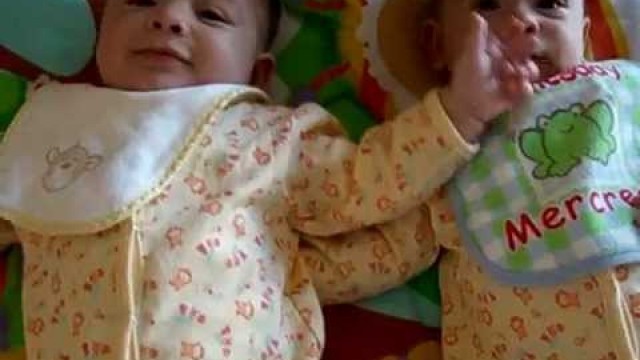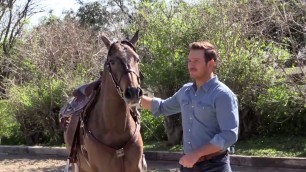

'Fourth Month Baby Milestones: Growth By month four, your baby’s weight will likely have doubled from birth. If you’re concerned that your child isn’t eating well or isn’t gaining enough weight, talk to your pediatrician. Fourth Month Baby Milestones: Motor Skills Your baby is becoming more dexterous and doing more with her hands. Her hands now work together to move a toy or shake a rattle. In fact, those hands will grab for just about anything within reach, including a stuffed animal, your hair, and any colorful or shiny object hanging nearby. You might want to remove any earrings or necklaces if you don’t want to experience a painful tug. Anything your baby is able to pick up will likely end up in her mouth -- tasting is one of the ways she explores her world. It’s crucial that you don’t leave small items lying around that baby could choke on. Anything that can fit inside a toilet paper tube is too small to be within finger’s reach of your 4-month-old. By now, your baby’s head should no longer be wobbly. Four-month-olds have pretty good head control while sitting supported, and they can hold their head and chest upright while lying on their stomach during tummy time. They also can kick and push with their feet. Some babies have even figured out how to roll from tummy to back at this point. Fourth Month Baby Milestones: Sleep By your baby’s fourth month, you both should be enjoying a full night’s sleep. At this age babies typically can sleep seven to eight hours in a row. Add in two naps, and baby should be sleeping a total of 14 to 16 hours a day. Fourth Month Baby Milestones: The Senses During the first three months, babies have a lot of trouble distinguishing color contrasts, which was why your newborn preferred bright colors and black-and-white objects. Now at four months, baby’s vision has sharpened to about 20/40. Babies at this age can pick out more subtle color contrasts, such as a red button on a red shirt. They also can see across the room, although they still prefer looking at people close-up. Your baby’s eyes should move together smoothly and follow objects and people around the room. If you notice crossed eyes or any other vision problems, be sure to mention them to your pediatrician. You also may notice that your baby’s eyes are starting to change color. Lighter-colored eyes may go through several changes before settling on their final shade at about six months. Fourth Month Baby Milestones: Eating Some pediatricians don’t recommend starting babies on solid foods until six months. But depending on your baby’s size -- bigger babies may not be satisfied with breast milk or formula alone -- and readiness, your doctor may say it’s OK to start solids at four months. Before that first feeding, make sure that your baby has good head and neck control and can sit upright with support. Baby’s first food should be an iron-fortified rice cereal mixed with either formula or breast milk. Make the cereal very thin at first -- not much thicker than plain formula -- until your baby gets used to it. Then see how she reacts to taking the spoon. Babies at this age may still have a strong tongue-thrust reflex. If you put a spoon of cereal in your baby’s mouth and she pushes it right back out, you may need to wait a week or two before trying solids again. Fourth Month Baby Milestones: Communication Four-month-olds are starting to discover themselves as unique individuals. They’re also beginning to notice that the people around them respond to their actions. When your baby cries, you come over. When she drops something on the floor, you pick it up. Many babies delight in dropping the same object over and over and over again, just to watch their parents repeatedly pick it up. Babies at this age are learning to be effective communicators. They express themselves through coos, vowel sounds such as ooh and aah, squeals, gurgles, and laughter. You’ll notice that your baby can use her face to express a wide range of emotions, from a beaming happy smile, to a crunched-up angry face, to open-mouthed surprise. Your 4-month-old is also starting to learn how to read emotions from your voice and facial expressions.'
Tags: family , beauty , funny , beautiful , fun , feed , pretty , baby , love , Divertido , laughing , Smiling , twins , breast , bebe , twin , breastfeeding , feeding , newborn , Amor , gemelos , sonrisa , lactance , lactancia , breasfeed , nacer , nacido , mellizos , riendo , reir
See also:

















comments